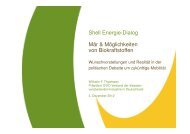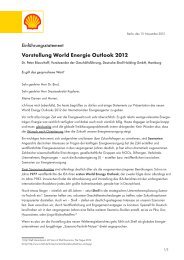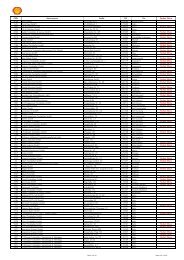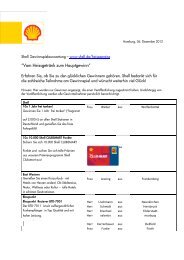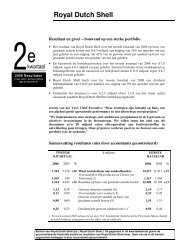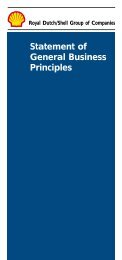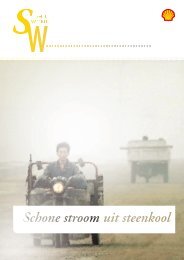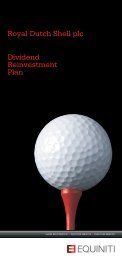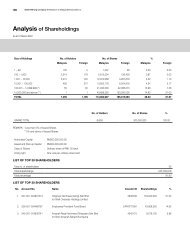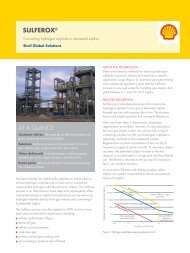ENVIRONMENTAL STATEMENT BARDOLINO DEVELOPMENT
ENVIRONMENTAL STATEMENT BARDOLINO DEVELOPMENT
ENVIRONMENTAL STATEMENT BARDOLINO DEVELOPMENT
Create successful ePaper yourself
Turn your PDF publications into a flip-book with our unique Google optimized e-Paper software.
Bardolino Development Environmental Statement<br />
In the North Sea the majority of pockmarks have been found in the sediments of the Witch<br />
Ground Formation (in the central/northern North Sea depression known as the Witch Ground<br />
Basin) and their equivalents, the Flags Formation (which occupies hollows in the northern<br />
North Sea plateau) (Judd, 2001).<br />
The proposed Bardolino development is located outside the Witch Ground and any known<br />
gas seep areas. The Scanner Pockmark (dSAC) in Block 15/25 and Braemar Pockmarks<br />
(dSAC) in Block 16/3 are located approximately 67 km and 146 km respectively from the<br />
proposed development site (DTI, 2001; JNCC, 2008; Figure 4.6). No pockmarks were<br />
identified during the anchor conditions survey (Gardline Geosurvey Limited 2007).<br />
Figure 4.6 Location of the proposed Bardolino development site in relation to gas<br />
seep areas, the Scanner Pockmark, and the Braemar Pockmarks<br />
4.3.2 Annex II Species<br />
Annex II Species are defined as “species of community interest whose conservation requires<br />
the designation of Special Areas of Conservation (SAC)”. There are four species listed on<br />
Annex II of the Habitats Directive known to occur in UK waters for which selection of offshore<br />
SACs will be considered; grey seal, common or harbour seal, bottlenose dolphin and harbour<br />
porpoise (Table 4.10). As with all marine mammals, the four species can be impacted by a<br />
number of effects associated with the activities of the offshore oil and gas industry, such as<br />
underwater noise, chemical contaminants, oil spills, and any effects on prey availability<br />
(SMRU, 2001).<br />
For the two seal species, coastal SACs have already been designated in the UK to protect<br />
breeding colonies and their moulting and haul-out sites. Two coastal SACs have been<br />
designated for bottlenose dolphins within UK territorial waters. The UK currently has no<br />
proposed SACs for harbour porpoise. The four species are typically wide-ranging, so it is<br />
difficult to identify specific areas which may be deemed essential to their life and reproduction,<br />
April 2008 Page 4-15


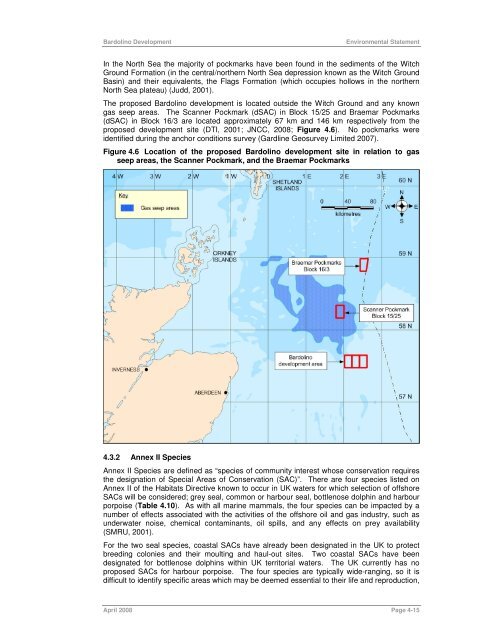

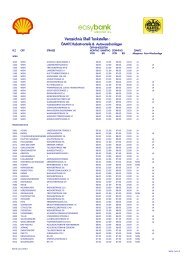
![Download Shell AutoGas Stationen [Stand: Januar 2013] (PDF](https://img.yumpu.com/9982753/1/190x245/download-shell-autogas-stationen-stand-januar-2013-pdf.jpg?quality=85)
